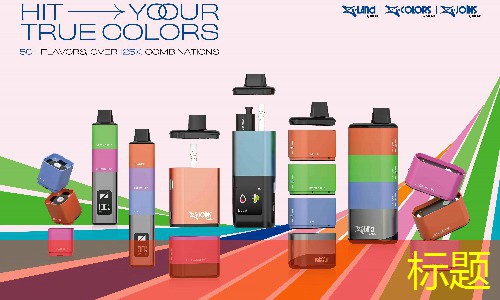Introduction to Advanced E-Cigarette Technology
The vaping industry has rapidly evolved over the past decade, driven by technological innovations that enhance user experience and safety. With over 2.5 million users in the United States alone, the demand for high-performance e-cigarettes continues to rise. This article explores significant advancements in e-cigarette technology by focusing on five key elements that define the modern vaping experience: battery life, flavor diversity, device design, safety features, and user customization.
1. Battery Life
Extended Usage with Larger Batteries
One of the most critical aspects of any electronic device is its battery life. Modern e-cigarettes feature advanced lithium-ion batteries, improving both longevity and performance. Many devices offer a battery capacity exceeding 3000 mAh, allowing for longer usage between charges. As a result, users can enjoy extended vaping sessions without the constant need for recharging, which enhances convenience and satisfaction.
Fast Charging Technologies
Moreover, rapid charging technologies have become standard, enabling users to charge their devices in as little as 30 minutes. This emphasis on battery efficiency caters to the lifestyles of busy individuals who benefit from quick recharge capabilities while on the go. These developments have made e-cigarettes far more user-friendly and accessible.
2. Flavor Diversity
A Range of Flavor Profiles
With approximately 7,000 distinct e-liquid flavors available on the market, flavor diversity plays a crucial role in attracting and retaining vapers. From traditional tobacco flavors to innovative fruit, dessert, and beverage profiles, the choices are vast and varied. Such an array contributes significantly to the overall enjoyment of vaping, allowing users to personalize their experiences according to their preferences.

Quality and Safety of E-Liquids
In addition to the variety of flavor profiles, quality assurance has become paramount. Regulatory bodies are beginning to impose stricter guidelines on e-liquid manufacturing, ensuring that the ingredients used are safe for consumption. As of now, many brands have adopted transparency by clearly listing all ingredients, thus empowering consumers with information and promoting safe vaping practices.
3. Device Design
Ergonomics and Aesthetics
The design of e-cigarette devices has undergone significant transformations to improve user experience. A growing emphasis on ergonomics has led to devices that fit comfortably in the hand, while sleek designs appeal to modern aesthetics. Leading brands in the industry have started to invest in materials that reduce weight while increasing durability, making e-cigarettes both portable and stylish.
Compact and All-in-One Solutions
The popularity of pod systems — compact and all-in-one devices — has further changed the landscape. These systems often feature refillable pods, which are easy to use and allow for convenience in flavor switching. Many new users are drawn to this design due to its simplicity and ease of maintenance, often recommending them as a transition from traditional cigarettes.
4. Safety Features
Integrated Safety Mechanisms
Safety remains a top priority in the vaping industry, with many modern e-cigarettes equipped with various safety features. These include overcharge protection, short-circuit protection, and automatic shut-off mechanisms. Devices often also have built-in temperature control to prevent overheating, ensuring a safe vaping experience for users.
Child Safety and Tamper-Resistant Packaging
In addition to device features, manufacturers are increasingly adopting child safety standards — such as child-resistant packaging for e-liquids — to prevent accidents. Such measures reflect a commitment to consumer safety and responsibility, enhancing the credibility of vaping as an alternative to smoking.
5. User Customization
Adjustable Settings for a Personalized Experience
Today’s e-cigarettes go beyond simple operation by offering users the ability to customize their vaping experience. Many devices come with adjustable wattage settings, allowing users to fine-tune their vapor production according to personal preferences. Some advanced models even include options for temperature control, enabling vapers to achieve their ideal flavor profiles.
Smart Features and Apps
Moreover, the integration of smart technology has led to e-cigarettes that can connect to applications via Bluetooth, providing users with valuable data about their vaping habits. By tracking usage patterns and offering recommendations based on their preferences, these apps enhance the vaping experience and encourage responsible usage.
Conclusion
The advancements in e-cigarette technology have transformed the vaping landscape significantly. As we navigate through battery life, flavor diversity, device design, safety features, and user customization, it becomes evident that the industry is committed to enhancing user experience while prioritizing safety and satisfaction. With millions of users globally, the future of e-cigarettes holds immense potential for further innovation and growth, shaping how people view smoking alternatives.








